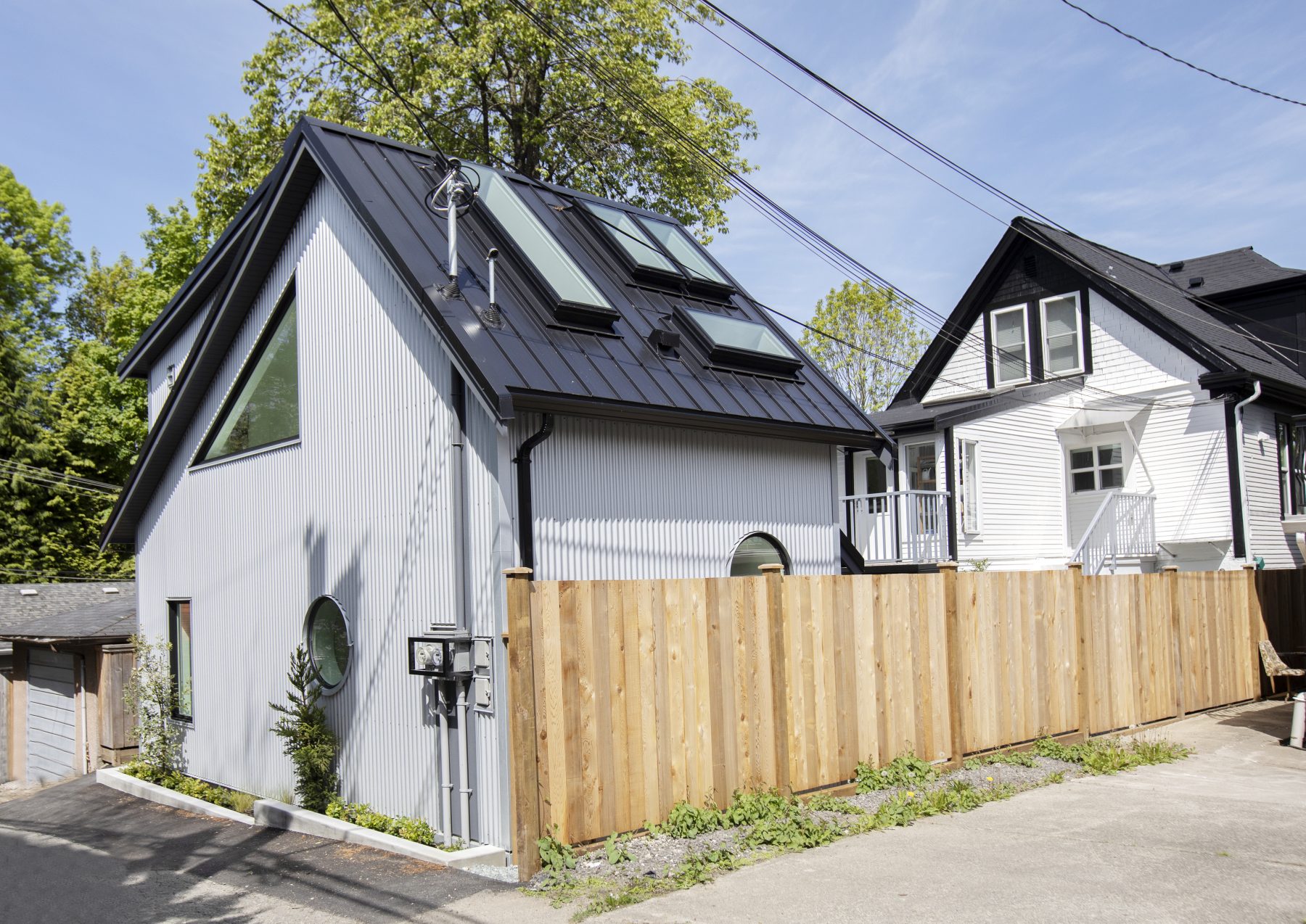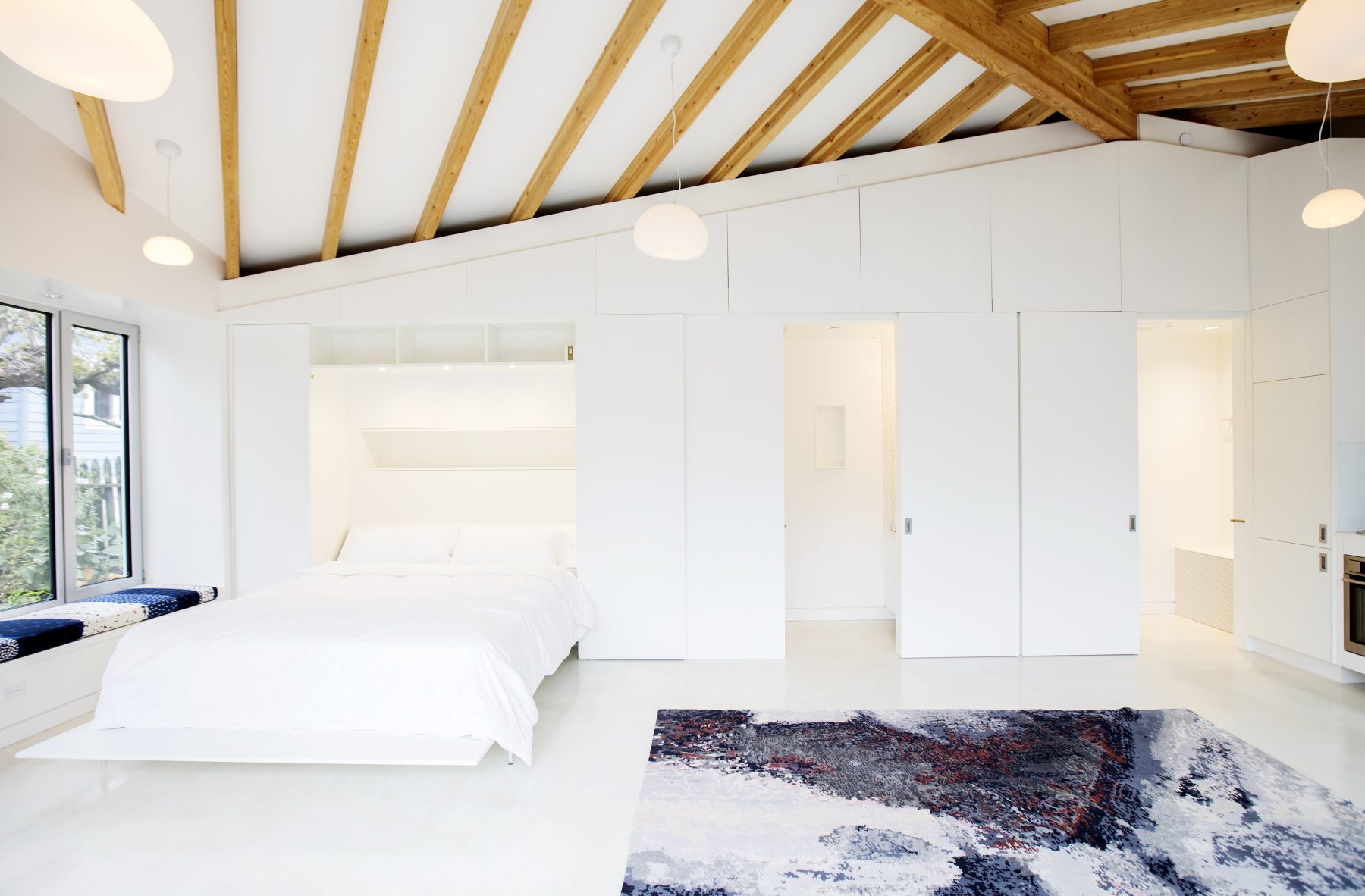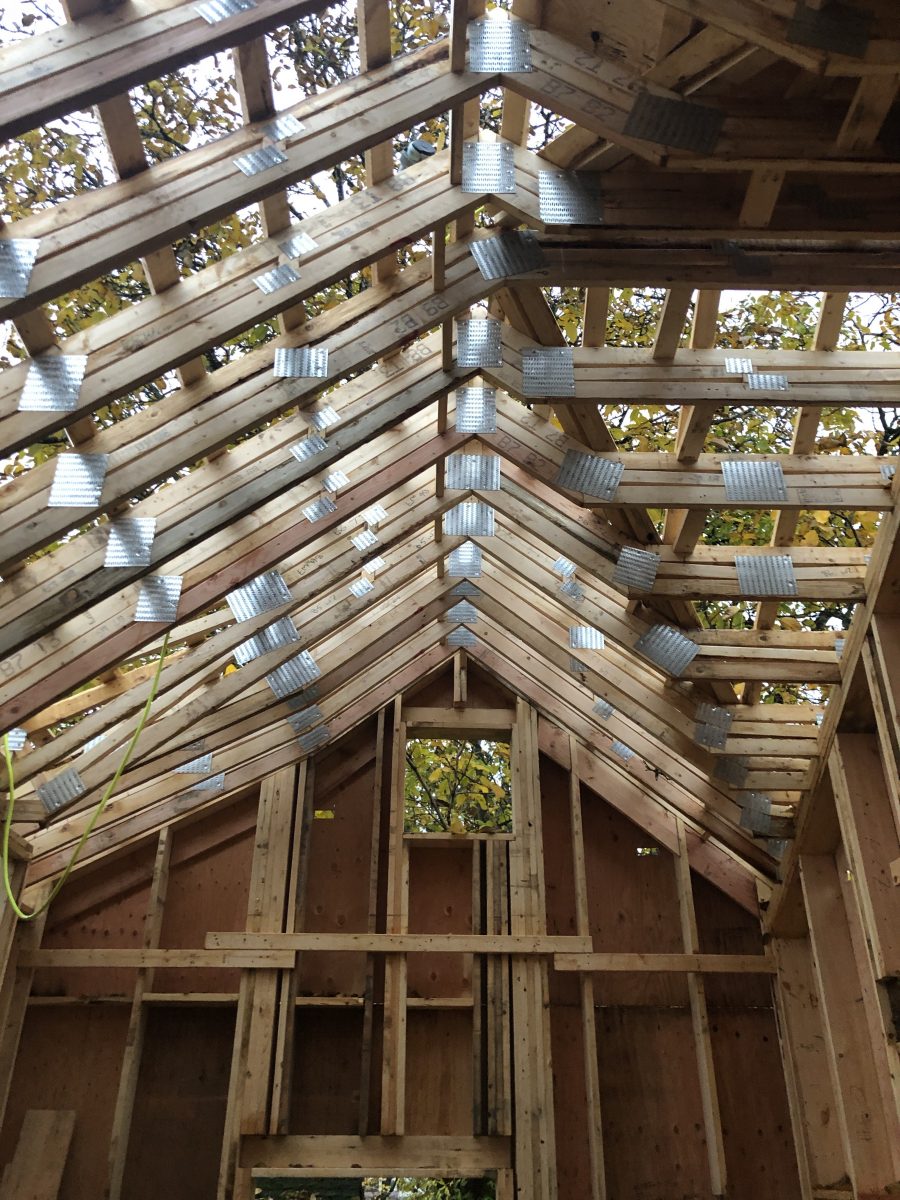5 Reasons to Build a Laneway House

Neighbourhoods all over Vancouver are adopting these small, lane-oriented homes. With there now being well over 2000 laneway homes distributed throughout Vancouver and North Vancouver, all you need to do is take a stroll down the lane to see for yourself. [1]
Sure, they look pretty cool, and they add some flare to the lane. But aside from that, why build a laneway house?
5 Reasons to Build a Laneway House
1. It brings your family together under [two] roofs
Having two homes on one lot provides a space for your family to stay connected while growing old together.
Many different versions of intergenerational living take place on these lots – everything from children building in the backyard of mom and dad’s house, parents downsizing making room for their child’s family in the main house, to parents building behind their child’s house in preparation for retirement.
As you can imagine, the possibilities are endless. But, they all have one thing in common: they bring the family together.

2. It adds value to your property
Having a laneway home in your backyard provides value in a few ways, including passive income, resale value, and long-term value.
Passive Income
If you are looking for a way to make passive income, building a laneway house is an option that avoids additional condo fees and land costs, and gives you the flexibility to live in the main house while renting out the smaller dwelling, or vice versa.
While rent of a laneway home varies depending on how many bedrooms and bathrooms the unit has, the majority of renters are paying between $1500-$2000 (38%), and $2000-$2500 (13%) [2]
Resale
When homeowners that bought property with an existing laneway house were interviewed for a survey by the City of Vancouver, 60% said that its presence was an important factor in their decision to buy the property. [2]
Because there’s no hard and fast data on the resale value of a property with a laneway house, we turned to award-winning Vancouver realtor, Shawn Anderson, for his experience.
“A laneway will increase the value of the property substantially, as it allows buyers to have an additional revenue stream to support the mortgage, typically in excess of the replacement cost of the laneway house.
So, not only does it allow a larger pool of buyers more purchasing power when the entire home comes up for sale, there’s also a business case to be had when considering the addition of a laneway to the property by an end user, as the revenue will offset the cost of financing the construction.”
Long-Term Value
And, last but not least, setting down roots in the backyard of your favourite neighbourhood provides the kind of value that you just can’t put a price tag on.
3. It provides an alternative housing option
The bottom line is that we need more detached, ground-oriented housing options beyond owning a house or renting a basement suite in Vancouver.
62% of laneway house occupants said they decided to live in a laneway because of the desire to live in a detached unit, and 44% said that renting a laneway was a more affordable option than buying a home.
By choosing to build one of these homes, you are helping to gently densify the market while preserving the character of the neighbourhood that we know and love.

4. It reduces your environmental impact
In order to support the average Canadian’s ecological footprint, we would need just under 2.5 acres of land and water per person to produce all the resources consumed, and to absorb the waste that is produced. [3]
Laneway homes help to reduce your footprint in a few ways.
Less space means less stuff
We believe that the philosophy of ‘just enough’ could very well save the earth.
It goes without saying that living in a smaller space means you need less stuff, so fewer consumer goods need to be purchased.

Less energy to build
Building and construction activities together account for 39% of energy-related carbon dioxide (CO2) emissions. [4]
By building a small dwelling, you are providing the same amount of housing, using a smaller amount of materials per person housed, which in turn lowers the amount of energy used to build the home.

Less energy to heat and cool
Laneway homes are built using the same wall dimensions as a regular home, but for a significantly smaller dwelling.
Because the relationship of the building envelope to the interior of the home is higher than the average home, laneway houses are much more efficient when it comes to heating and cooling the space.
For example, a small portable AC unit that would otherwise be used to cool a single room in a large house could be used to cool an entire floor of a laneway home.
5. Just because
Sometimes we come across people who don’t have a specific reason behind building a laneway house. They just.. want one!
Who are we to judge? They are pretty neat after all.
In fact, about 9% of laneway house owners reported that no one lives in the home full-time. [2] This begs the question, ‘what do they get used for then?’
In some cases, the answer is an office space, and in others, a guest suite. Either way, having a laneway house in your backyard gives you the flexibility to decide what you do with the space.
People choose to build laneway homes for all different reasons.
Whether you decide to build one for yourself, for your family, or as a rental property, having it in your backyard gives you a tonne of flexibility.
The question is – why do you want one?

Resources
[1] https://www.cbc.ca/news/canada/british-columbia/laneway-vancouver-coachhouse-density-1.3835335
[2] https://vancouver.ca/files/cov/laneway-house-review-survey-summary.pdf
[3] https://www.peelregion.ca/planning/bulletins/ecological.pdf
[4] https://www.worldgbc.org/news-media/global-status-report-2017